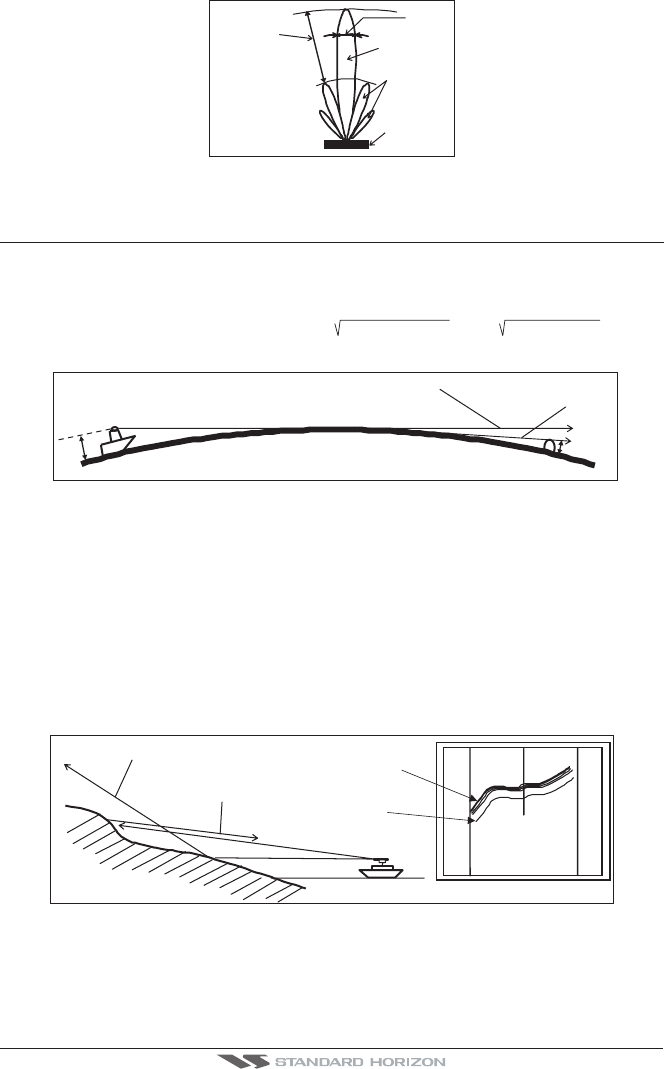
Page 32 Radar Installation Manual
Beam
Side
lobe
Main
Side
Antenna
Figure A.0.1 - Antenna pattern
A.1 CHARACTERISTICS OF RADAR WAVE
Radio waves travel out from the antenna while bending slightly along the earth’s surface.
The amount they bend depends on atmospheric conditions. The sight distance of a radar
generally is about 6% longer than the optical sight distance and is calculated using this
equation:
Radar sight distance (NM) = 2.22 ( antenna height (m) + target height (m))
h1
h2
Line of sight
Radar Radio Wave
Earth
Figure A.1 - Radar wave
A.1.0 Targets difficult to display on screen
The intensity of the reflected radio signal from a target depends on the distance, height, and
size of the target, as well as its material and shape, along with the radar’s transmitter power
output and antenna size. Targets made of fibreglass, wood, or other low-reflectance
materials or those that have a small incident angle are difficult to display on a screen. Sandy
beaches, and sandy or muddy shallows can be difficult to catch. Because there’s not much
to reflect a signal back to you, a coastline can actually be closer to your boat than it appears
on the screen.
Apparent coastline
Actual (invisible)
coastline
Invisible
Visible
3
1
HU
Figure A.1.0 - Targets difficult to display on screen
A.1.1 Shadow zones of radar
Radar waves propagate in a straight line. A high outcropping of land or a large ship will


















